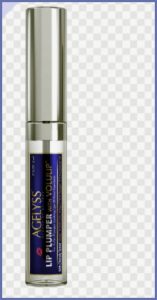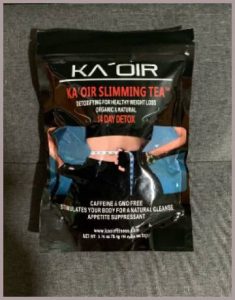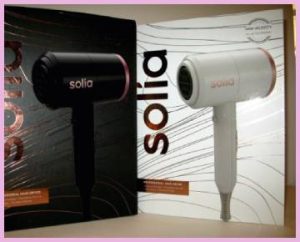I’ve spent years managing PCOS, navigating supplements like Ovasitol and inositol to tame my irregular cycles and insulin resistance.
Both are game-changers, but which one truly works for me—and you?
In this 3200-word article, I’ll share my experience, compare their features, and analyze pros and cons to help you choose.
From hormonal balance to cost, I’ll break it all down conversationally, like we’re chatting over coffee.
My goal? To guide you toward the best PCOS treatment.
Let’s explore what makes Ovasitol and inositol tick.
Comparison Table of Ovasitol Vs. Inositol
| Feature | Ovasitol | Inositol-Based Products |
| Composition | 40:1 myo-inositol to D-chiro-inositol | Varies; often myo-inositol alone or mixed |
| Dosage | 2,000 mg myo + 50 mg DCI, twice daily | 1,000–4,000 mg, varies by brand |
| Certification | NSF certified | Varies; not all certified |
| Cost | $88–$90 for 90 days | $10–$50 for 30–90 days |
| Form | Unflavored powder, packets, or canister | Capsules, powder, or tablets |
| PCOS Benefits | Menstrual regularity, ovulation, insulin | Varies; insulin support, ovulation |
| Side Effects | Minimal, rare | Mild GI issues at high doses |
| Availability | Theralogix, online only | Widely available online, pharmacies |
My PCOS Struggle and Inositol Discovery
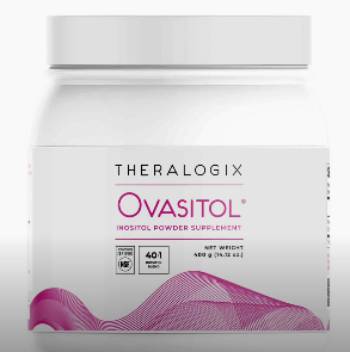
Living with PCOS feels like a constant puzzle.
My periods were unpredictable, my skin broke out, and sugar cravings ruled my kitchen.
Diagnosed at 16, I tried metformin, but the nausea was unbearable.
Then, in 2020, my nutritionist mentioned inositol, a sugar-like compound that helps insulin work better.
I was skeptical but desperate.
I started with generic myo-inositol, noticing lighter periods after a month.
Later, I switched to Ovasitol, drawn by its specific 40:1 ratio.
Both helped, but their differences intrigued me.
Let’s unpack what they are.
Inositol is a family of nine compounds, with myo-inositol (MI) and D-chiro-inositol (DCI) being key for PCOS.
They act as insulin second messengers, improving how cells handle glucose.
In PCOS, insulin resistance drives high androgens, causing irregular cycles and acne.
MI boosts insulin sensitivity and ovulation, while DCI supports ovarian function but can harm eggs in high doses.
Ovasitol, made by Theralogix, combines MI and DCI in a 40:1 ratio, mimicking the body’s natural balance.
Generic inositol products vary—some are MI alone, others mix MI and DCI randomly.
My journey with both taught me their strengths and quirks.
Ovasitol’s precise ratio felt tailored, but generic inositol was cheaper.
I dove into research, talked to my doctor, and tracked my symptoms to compare them.
Here’s what I found.
How Ovasitol and Inositol Work for PCOS
PCOS messes with insulin, making your body pump out more to manage blood sugar.
This spikes androgens, disrupting ovulation and causing symptoms like hirsutism.
Inositol steps in by enhancing insulin signaling.
MI converts to inositolphosphoglycan (MI-IPG), aiding glucose uptake and FSH signaling for ovulation.
DCI, via DCI-IPG, supports glycogen synthesis but can boost androgens if overused.
Studies show a 40:1 MI-to-DCI ratio, like Ovasitol’s, restores ovulation better than MI alone or high DCI doses.
Ovasitol’s formula is based on trials showing this ratio improves menstrual regularity and egg quality.
In one study, women taking 40:1 MI/DCI had a 46.7% ovulation rate versus 11.2% without it.
Generic inositol, often 4,000 mg of MI daily, also helps but may lack DCI’s ovarian boost.
I noticed Ovasitol regulated my cycle faster—within six weeks—while generic MI took three months.
Both lowered my A1C, but Ovasitol’s targeted approach felt more consistent.
The science is clear: inositol, especially in a 40:1 ratio, tackles PCOS’s root—insulin resistance.
But the real-world experience varies by product.
Let’s dig into their pros and cons.
Pros of Ovasitol
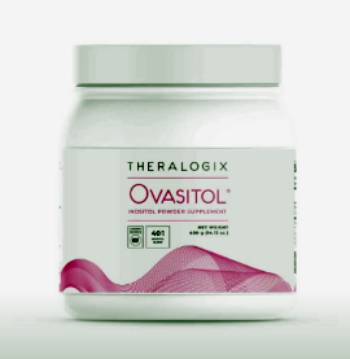
- Precise 40:1 Ratio: Ovasitol’s MI-to-DCI balance mimics the body’s natural levels, optimizing ovulation and insulin sensitivity. My cycles shortened from 45 to 30 days.
- NSF Certification: Independently tested for purity, ensuring no contaminants. I felt confident knowing exactly what I was taking.
- Minimal Side Effects: At 4,000 mg daily, I had no nausea or bloating, unlike metformin. Studies confirm it’s well-tolerated.
- Improves Fertility: Enhanced egg quality and ovulation rates in trials. My doctor noted better ovarian response during my fertility check.
- Regulates Hormones: Lowered my testosterone, reducing chin acne. My skin cleared up noticeably after three months.
- Pregnancy-Safe: Safe during pregnancy, reducing gestational diabetes risk. I continued it while trying to conceive.
- Convenient Dosing: Packets or scoops mix easily into water. I tossed a packet in my bag for travel.
Cons of Ovasitol
- High Cost: $88 for 90 days stung my wallet. Generic inositol is often half the price.
- Online Only: Only available through Theralogix or select sites. I had to plan orders to avoid running out.
- Taste Issues: Unflavored but slightly sweet. I mixed it with juice to mask it.
- Slow Results: Took six weeks for noticeable cycle changes. Patience was key.
- Limited Availability: Not in pharmacies, which frustrated me when I needed it fast.
- Not for Everyone: Some women need additional supplements. My friend with severe PCOS still needed metformin.
- Effects: May not work for everyone, depending on individual PCOS severity and insulin response.
Pros of Generic Inositol
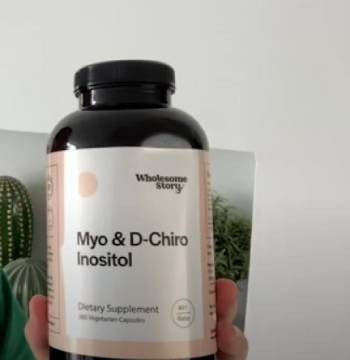
- Affordable: Prices range from $10–$50 for 30–90 days. I saved money with brands like Jarrow Formulas.
- Widely Available: Found in pharmacies and online. I grabbed a bottle at my local store in a pinch.
- Flexible Dosing: Options to adjust from 1,000–4,000 mg daily. I started low to test tolerance.
- Effective for Insulin: Reduced my A1C from 5.6 to 5.2 in three months. Studies back MI’s insulin-sensitizing effects.
- Variety of Forms: Capsules, powders, or tablets. I preferred capsules for convenience.
- Safe Profile: Minimal side effects at standard doses. I had slight bloating initially, which faded.
- Customizable Options: Some brands add vitamins or DCI. I tried one with folic acid for extra fertility support.
Cons of Generic Inositol
- Inconsistent Ratios: Many lack the 40:1 MI/DCI balance. I worried about suboptimal effects with MI-only products.
- No Certification: Not all are tested for purity. I once got a sketchy batch with odd texture.
- Variable Quality: Brands differ in potency. My cheap MI powder clumped and tasted gritty.
- Slower Ovulation Boost: Took longer to regulate cycles than Ovasitol. My periods stayed erratic for three months.
- High DCI Risk: Some products overuse DCI, harming egg quality. I avoided these after reading studies.
- Dosage Confusion: Varying instructions across brands. I had to research to get 4,000 mg right.
Key Features Compared
Ovasitol’s standout is its 40:1 ratio, backed by trials for PCOS.
Each dose delivers 2,000 mg MI and 50 mg DCI, taken twice daily, totaling 4,000 mg MI and 100 mg DCI.
It’s unflavored, NSF-certified, and designed for long-term use.
I loved the packets for portability, though the cost was steep.
Generic inositol offers flexibility—MI doses range from 1,000–4,000 mg, and some include DCI or extras like folate.
But ratios vary, and quality isn’t guaranteed.
I found Jarrow’s MI reliable but missed Ovasitol’s precision.
Ovasitol targets PCOS specifically, with research showing it outperforms MI alone for ovulation.
Generic inositol is broader, suiting budget-conscious users but requiring more research to pick a good brand.
I switched between both, balancing cost and effectiveness.
Ovasitol felt premium, but generics were practical when funds were tight.
My Real-World Experience
Starting with generic MI, I took 4,000 mg daily in capsules.
My cravings for sweets dropped, and my A1C improved, but my cycles stayed irregular for three months.
Switching to Ovasitol, I noticed faster results—my period arrived on day 30, and acne faded.
The powder mixed easily, but I disliked ordering online.
Cost pushed me back to generics occasionally, but I missed Ovasitol’s reliability.
Tracking symptoms, I saw Ovasitol edged out for hormonal balance, while generics were fine for maintenance.
I asked my doctor about long-term use.
She endorsed Ovasitol for its ratio but said generics work if budget’s a concern.
Friends with PCOS had mixed experiences—some swore by Ovasitol, others stuck with cheaper MI.
My takeaway? Ovasitol’s tailored, but generics are versatile.
Ovasitol Vs. Metformin: A Quick Note
Metformin, a common PCOS drug, improves insulin but often causes nausea.
Ovasitol and inositol have fewer side effects.
Studies show Ovasitol’s 40:1 ratio matches metformin for cycle regulation without digestive issues.
I ditched metformin after a month but stuck with Ovasitol.
Generics helped too, but Ovasitol felt gentler.
If metformin’s rough, inositol’s a solid alternative—talk to your doctor.
Choosing the Right Option for You
Your PCOS symptoms, budget, and goals matter.
Ovasitol’s ideal if you want a research-backed, precise formula and can afford $88 every three months.
It’s my go-to for fertility and cycle regularity.
Generic inositol suits tighter budgets or milder symptoms—stick to reputable brands like Jarrow or Pure Encapsulations.
I’d pick MI-only over random MI/DCI mixes to avoid high DCI doses.
Test both for three months, track cycles, and check A1C.
My nutritionist suggested pairing either with diet changes for best results.
Also Read: My Experience With Thorne Ovarian Care
Potential Side Effects and Safety
Both are safe at 4,000 mg daily.
Ovasitol’s NSF certification reassured me, and I had no side effects.
Generic MI caused mild bloating at first, which stopped after a week.
High doses (12,000 mg) of MI can cause nausea or diarrhea, but that’s rare.
DCI over 300 mg daily may harm eggs, so I avoided DCI-heavy generics.
Both are pregnancy-safe, reducing gestational diabetes risk.
I continued Ovasitol while trying to conceive, per my doctor’s advice.
Always consult yours before starting.
Cost and Accessibility Breakdown
Ovasitol’s $88 for 90 days feels pricey, especially since it’s online-only.
I planned orders to avoid gaps.
Generics, at $10–$50, are wallet-friendly and available everywhere.
I grabbed Jarrow’s MI at my pharmacy for $20.
Ovasitol’s quality justifies the cost for severe PCOS, but generics are practical for maintenance.
I balanced both, using Ovasitol during fertility pushes and generics otherwise.
Why the 40:1 Ratio Matters

PCOS ovaries have low MI and high DCI, disrupting ovulation.
A 40:1 MI/DCI ratio restores balance, per studies.
Ovasitol nails this, while generics often don’t.
I noticed Ovasitol’s faster cycle regulation, likely due to this ratio.
Generics with MI alone helped insulin but were slower for ovulation.
If fertility’s your goal, Ovasitol’s ratio is a game-changer.
For insulin control, generics can suffice.
Lifestyle Tips to Boost Results
Inositol isn’t a magic bullet.
I paired it with a low-GI diet, cutting sugar to stabilize insulin.
Exercise—30 minutes of walking daily—helped too.
Stress management, like yoga, lowered cortisol, which can worsen PCOS.
I tracked carbs and slept eight hours to maximize Ovasitol’s effects.
Generics worked better with these habits too.
My nutritionist stressed consistency—take inositol daily and tweak your lifestyle for lasting results.
Also Read: My Thoughts On Premama Fertility Support
Frequently Asked Questions (FAQs)
No, Ovasitol is a specific inositol supplement with a 40:1 myo-inositol to D-chiro-inositol ratio, while generic inositol varies in composition.
Ovasitol’s 40:1 ratio is best for PCOS, especially for ovulation and fertility, based on studies. Generic myo-inositol helps insulin resistance.
Many endocrinologists and nutritionists recommend Ovasitol for its research-backed ratio and purity, but consult your doctor.
High cost ($88 for 90 days), online-only availability, slight taste, and slow results (six weeks) are Ovasitol’s main drawbacks.
Final Thoughts
After years of trial, Ovasitol wins for PCOS precision.
Its 40:1 ratio regulated my cycles and boosted fertility faster than generics.
But it’s pricey, so generics like Jarrow’s MI are great for budget-conscious users or milder symptoms.
You deserve a supplement that fits your life—test both, track results, and pair with diet changes.
Ovasitol transformed my PCOS management, but generics kept me steady on a budget.
Choose what aligns with your goals and wallet, and let’s tackle PCOS together.

